1. The Flint Road Cart Factory
Some of Flint’s early automobile history is located on the north side of the Flint
River, just on the other side of today’s downtown, in the historic area known as Carriage Town. Carriage Town gets it’s name from the Flint
Road Cart Factory which it surrounds. After a failed plan to diversify the Flint Woolen
Mills, J. Dallas Dort and Billy Durant began leasing the factory to manufacture road
carts. Today the factory building stands mostly empty, and the once thriving neighborhood
around the factory is attempting to make a come back through their Renaissance Zone
designation by the government.
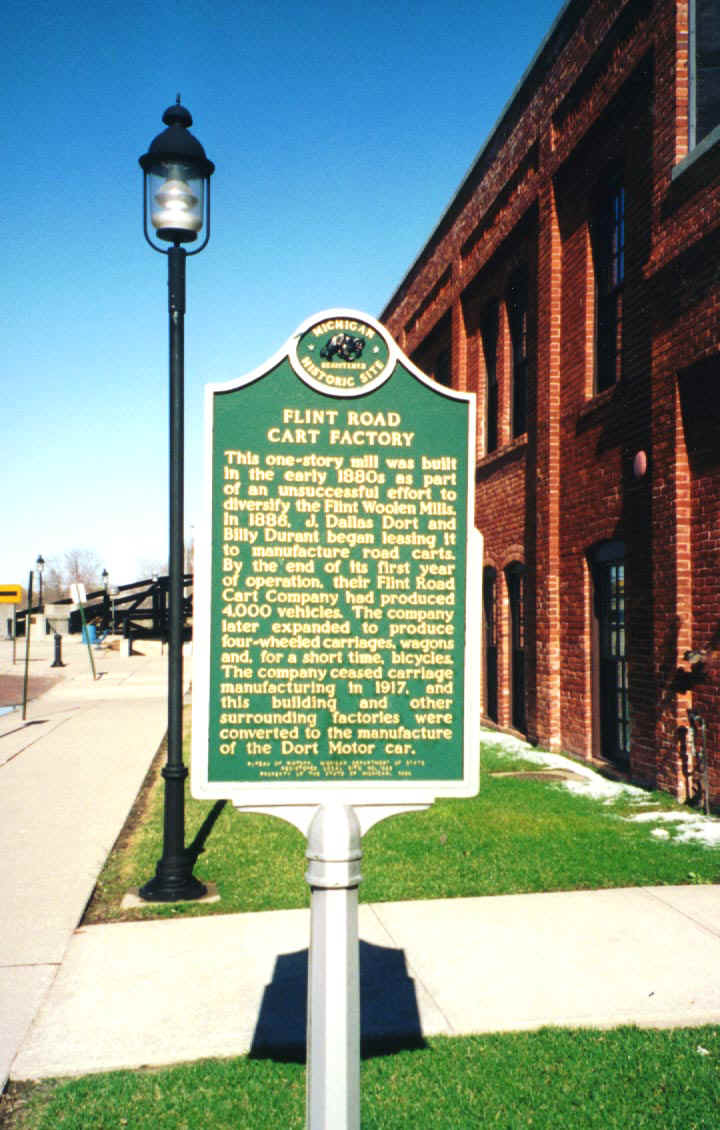
The sign reads:
Flint Road Cart Factory
This one-story mill was built in the early 1880s as part of an unsuccessful effort to
diversify the Flint Woolen Mills. In 1886, J. Dallas Dort and Billy Durant began leasing
it to manufacture road carts. By the end of its first year of operation, their Flint Road
Cart Company had produced 4,000 vehicles. The company later expanded to produce
four-wheeled carriages, wagons and, for a short time, bicycles. The company ceased
carriage manufacturing in 1917, and this building and other surrounding factories were
converted to the manufacture of the Dort Motor Car.
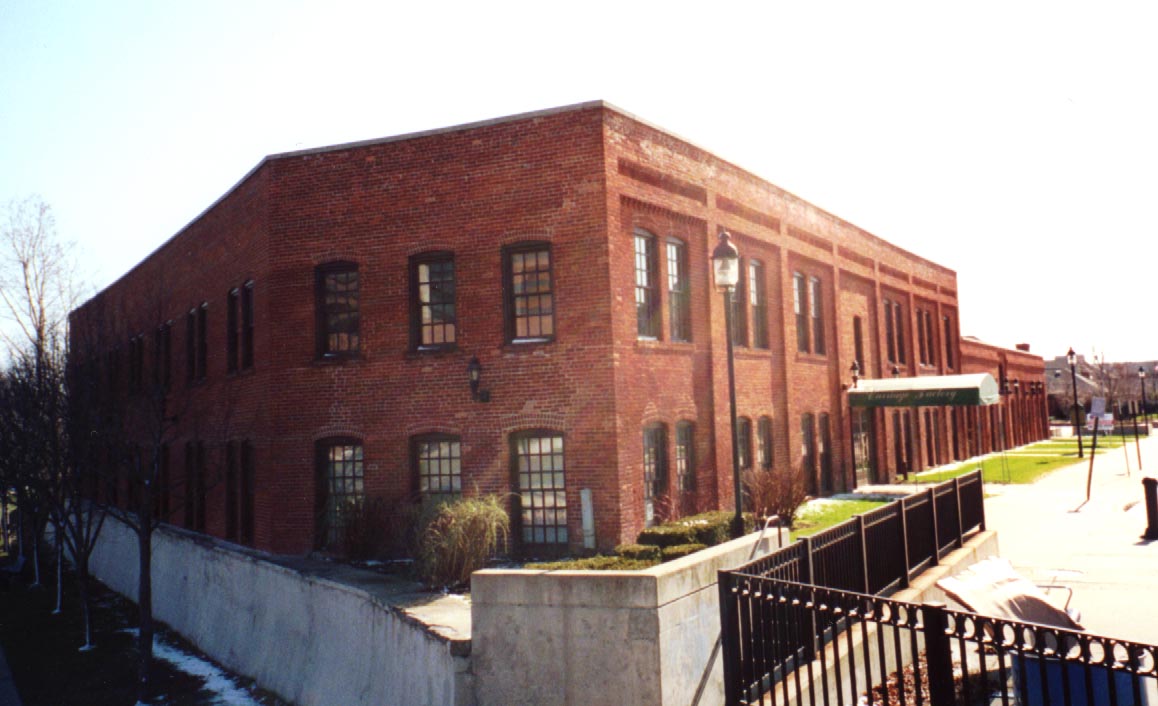
The Durant-Dort Carriage Office Building
Across the street from the Flint Road Cart Factory stands the Durant-Dort Carriage Company
building which was completed in 1896. The building was originally the headquarters of the
Durant-Dort Carriage company, and many of the decisions that led to the birth of General
Motors were made in this building. After the carriage company ceased operation, the
building was the headquarters for the Dort Motor Car Company until 1925. This building is
the last structure in Flint linked to "Billy" Durant’s pioneer efforts in
automobile manufacturing.
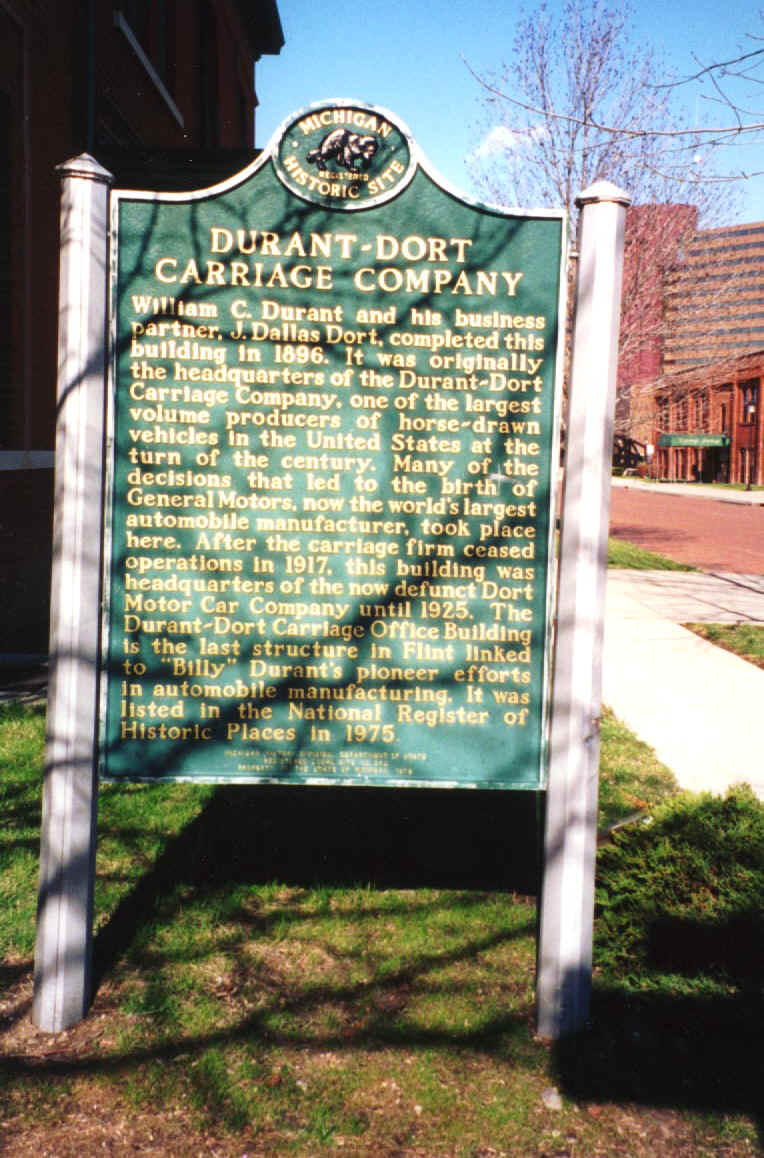
The sign reads:
Durant-Dort Carriage Company
William C. Durant and his business partner, J. Dallas Dort, completed this building in
1896. It was originally the headquarters of the Durant-Dort Carriage Company, one of the
largest volume producers of horse-drawn vehicles in the United States at the turn of the
century. Many of the decisions that led to the birth of General Motors, now the
world’s largest automobile manufacturer, took place here. After the carriage firm
ceased operations in 1917, this building was headquarters of the now defunct Dort Motor
Car Company until 1925. The Durant-Dort Carriage Office Building is the last structure in
Flint linked to "Billy" Durant’s pioneer efforts in automobile
manufacturing. It was listed in the National Register of Historic Places in 1975.
William C. Durant and his business partner, J. Dallas Dort, completed this building in
1896. It was originally the headquarters of the Durant-Dort Carriage Company, one of the
largest volume producers of horse-drawn vehicles in the United States at the turn of the
century. Many of the decisions that led to the birth of General Motors, now the
world’s largest automobile manufacturer, took place here. After the carriage firm
ceased operations in 1917, this building was headquarters of the now defunct Dort Motor
Car Company until 1925. The Durant-Dort Carriage Office Building is the last structure in
Flint linked to "Billy" Durant’s pioneer efforts in automobile
manufacturing. It was listed in the National Register of Historic Places in 1975.

The Charles W. Nash Home
Across the street from the northwest corner of the Durant-Dort Carriage Office
Building, stands the home of Charles W. Nash who was also an automotive pioneer in Flint.
Nash worked for the Flint Road Cart Company before becoming the general manager and vice
president of the Durant-Dort Carriage Company. He later became the general manager of the
Buick Motor Company in 1910, and the president of Buick and the General Motors Corporation
in 1912. In 1916 he formed his own company, the Nash Motor Company. Today Nash’s home
sits restored by its current residents as part of the Carriage Town revival of the late
1990s.
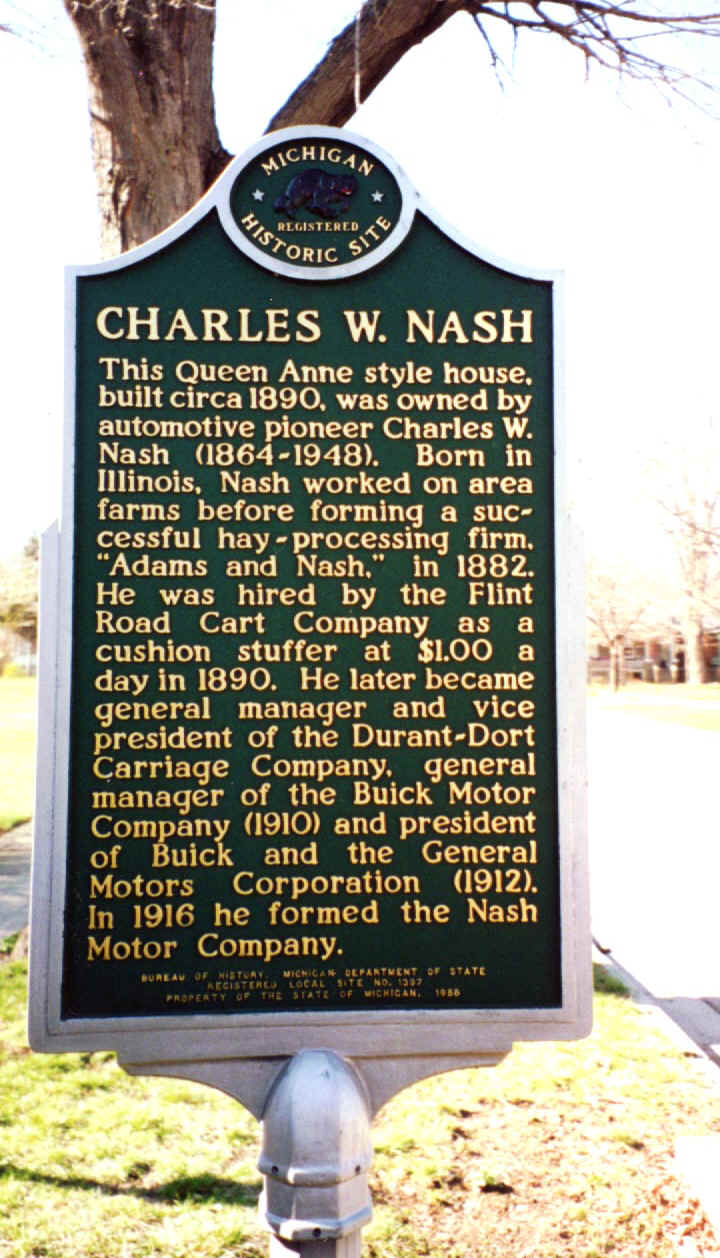
The sign reads:
Charles W. Nash
This Queen Anne style house, built circa 1890, was owned by automotive pioneer Charles W.
Nash (1864-1948). Born in Illinois, Nash worked on area farms before forming a successful
hay-processing firm, "Adams and Nash," in 1882. He was hired by the Flint Road
Cart Company as a cushion stuffer at $1.00 a day in 1890. He later became general manager
and vice president of the Durant-Dort Carriage Company, general manager of the Buick Motor
Company (1910) and president of Buick and the General Motors Corporation (1912). In 1916
he formed the Nash Motor Company.
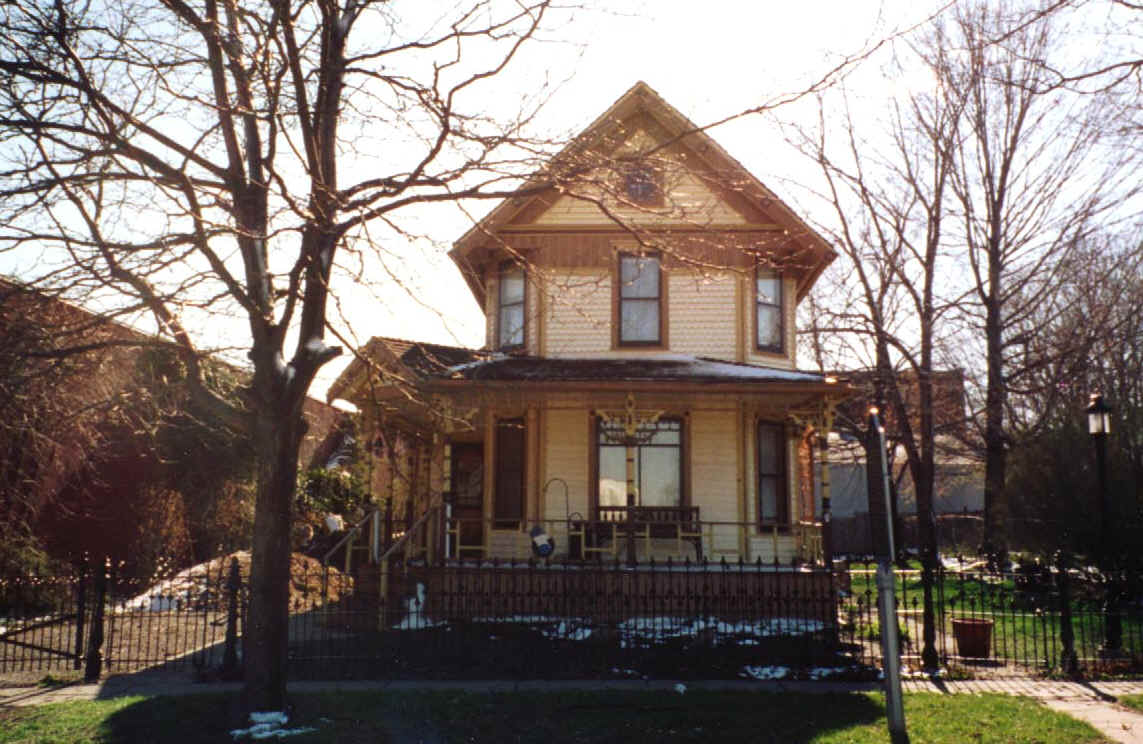
For more information on Flint’s Carriage Town and current news, you can visit their unofficial website at: project..ameritech.net/users/pt/cthna.htm
This web page was created by Matt Mitroka, a former GEO 333 student. Great job, Matt!
This material has been compiled for educational use only, and may not be reproduced without permission. One copy may be printed for personal use. Please contact Randall Schaetzl (soils@msu.edu) for more information or permissions.